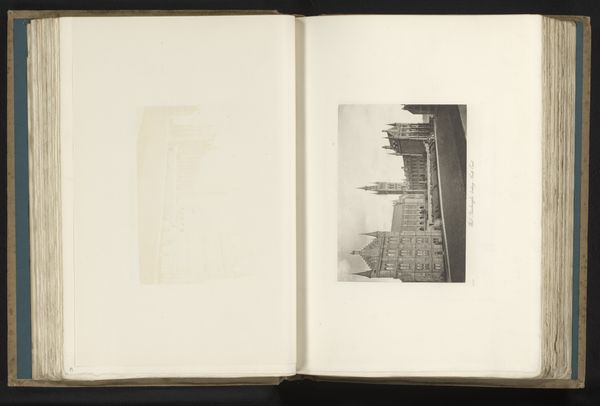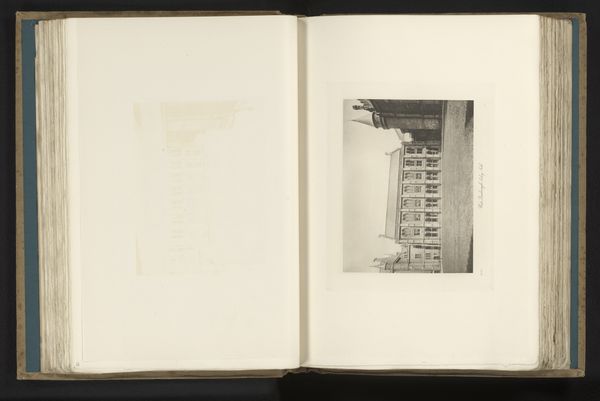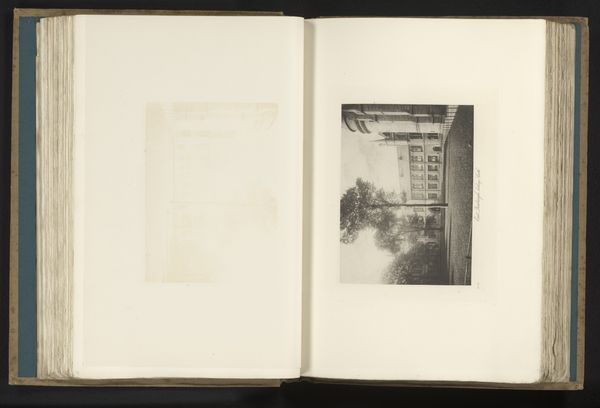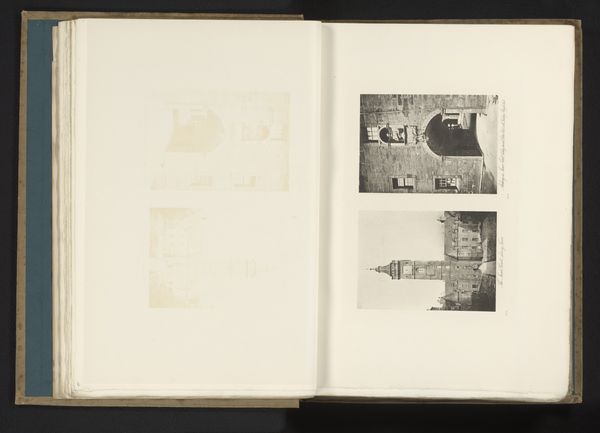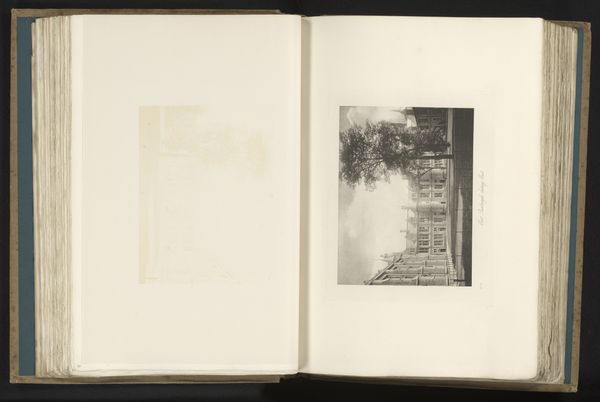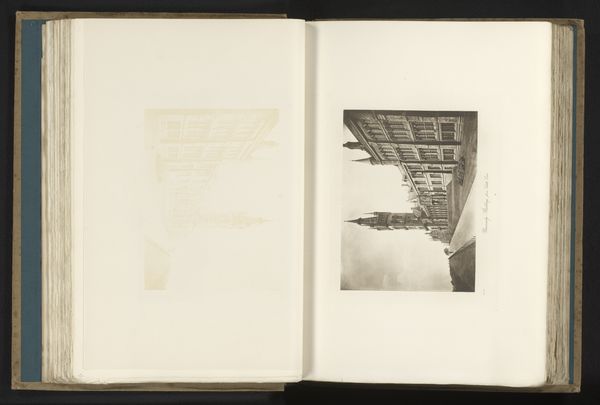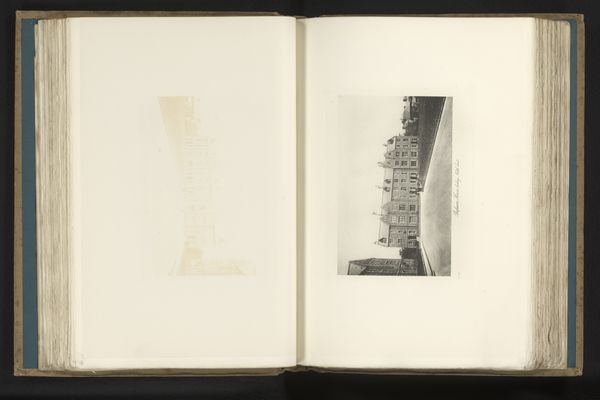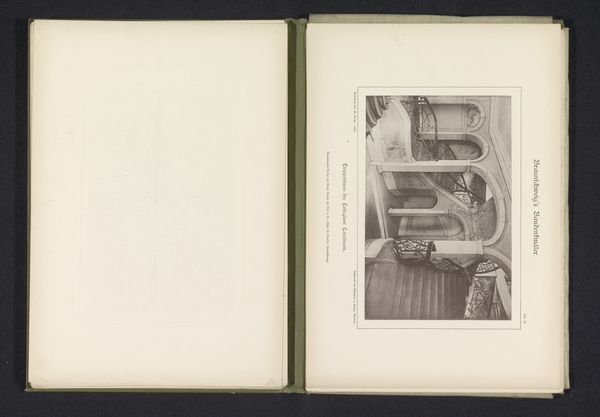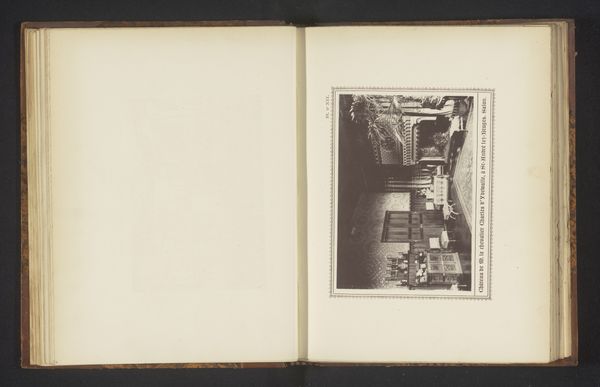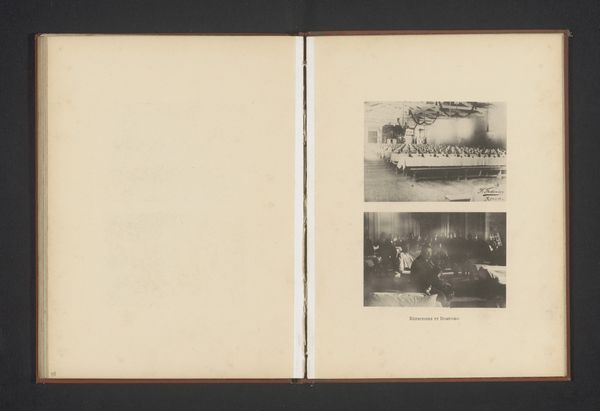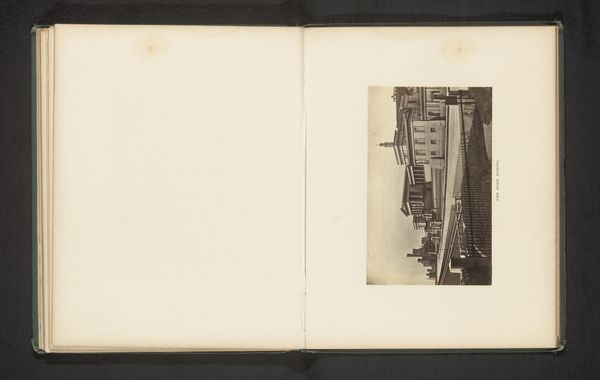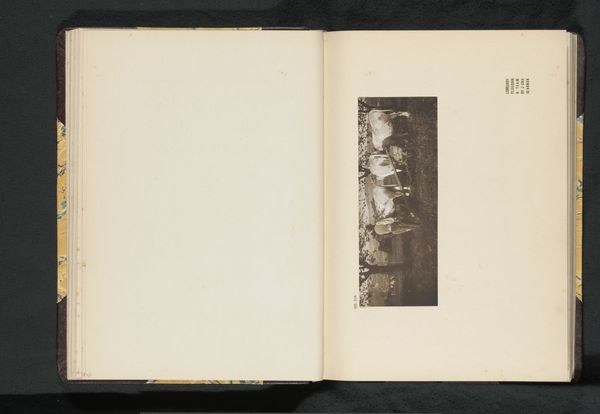
print, photography, gelatin-silver-print
#
ink paper printed
# print
#
landscape
#
photography
#
gelatin-silver-print
#
watercolor
#
realism
Dimensions: height 144 mm, width 194 mm
Copyright: Rijks Museum: Open Domain
Curator: Okay, let’s dive into this rather haunting image titled "Zaal met geraamtes en opgezette dieren in het Hunterian Museum" or "Hall with skeletons and stuffed animals in the Hunterian Museum," captured sometime before 1891, using gelatin silver print. What’s your immediate reaction to it? Editor: Oh, it's deliciously morbid, isn't it? It gives off a Victorian "cabinet of curiosities" vibe, but with a distinctly melancholic overtone. There's an air of still life but in the process of death. Curator: Indeed! The photograph portrays what looks like a long hall in a museum, absolutely packed to the brim with skeletons, taxidermied animals, and various specimens. I wonder, what does such a collection tell us about how science perceived the natural world at this point in time? Editor: It screams colonialism and scientific ambition! Think about the Hunterian Museum, which emerged out of the collections of John Hunter, the Scottish surgeon and anatomist, amidst an expanding British Empire. The drive to amass, categorize, and display these specimens, really, became intertwined with imperial projects and power structures. The arrangement of skeletal remains and dead animals suggests that science operated under a certain order in its collection, while being invasive to certain animal groups. Curator: Yes, these spaces of knowledge were often deeply implicated in imperial conquest and domination. Looking at it more simply, what I find striking is the density, all of those objects jammed into a single space. It almost feels claustrophobic, a potent visual metaphor for how we try to contain the natural world, squeeze it into our human frameworks. Editor: Right, and that density mirrors societal attitudes toward life and death in Victorian society. There was a fascination with mortality, yet a simultaneous attempt to distance oneself from its reality through collection and categorization, making it all less shocking. I see that there seems to be another print of a similar room on the opposite page; it makes me wonder whether the pairing says anything more than each individual picture could. Curator: Interesting. And this print form, a gelatin silver print... it adds to that sense of scientific objectification, a kind of sterile remove that further underscores that point. The fact it's black and white intensifies that too; maybe removing the sense of warmth to remind us that science and these animal samples don't have emotion either. Editor: It makes me reflect on contemporary bioethics as well; are we still struggling with similar tensions around ownership, knowledge, and respect for living beings? It appears that the animals were taken simply for studies instead of appreciating the animals themselves. Curator: Exactly! The way these artifacts were accumulated then continue to reflect these scientific values. I’ll look at taxidermied animals slightly differently for sure. Editor: I know I will. Seeing a display like this brings the issues back to light, challenging our ongoing perspectives.
Comments
No comments
Be the first to comment and join the conversation on the ultimate creative platform.

